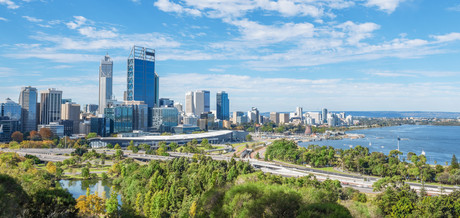GBCA calls for biodiversity in buildings and cities

The Green Building Council of Australia (GBCA) has released the landmark discussion paper ‘Building with nature’, calling for a renewed focus on prioritising biodiversity and ecology in our buildings and cities.
Analysing global and domestic research and evidence, the paper points to the significant positive impacts green space and biodiversity have on people and urban space but also warns that worldwide and within Australia, rapid urbanisation is putting pressure on ecosystems and threatening biodiversity.
The paper outlines a potential new set of principles that should be followed in order to bring nature back into the built environment. It continues to promote protecting areas of significant importance, as well as minimising impact and enhancing the ecological value of sites. It also introduces two new concepts that the built environment should address: being part of connecting and recreating natural corridors, and participating in programs to regenerate ecosystems beyond the site.
Additionally, the paper details how the Green Star building rating system will evolve to heighten its consideration of ecological and biodiversity outcomes when awarding a rating to help increase the amount of urban green space in our cities. Proposed changes would be incorporated as part of the current Green Star Future Focus review.
The GBCA’s Head of Market Transformation, Jorge Chapa, said Green Star has a proven track record transforming companies’ approaches to sustainability in the built environment over the last 15 years and is a powerful platform from which to drive better ecology and biodiversity outcomes.
“Urbanisation and biodiversity don’t have to be mutually exclusive propositions,” Chapa said.
“Cities depend on healthy ecosystems to sustain long-term conditions for life, health and ongoing prosperity, but the economic value of ecosystems and biodiversity is usually not adequately accounted for in conventional economic accounting.
“The built environment must be a part of delivering world-leading ecological and biodiversity outcomes that create ongoing value for people, places and the natural environment. As we look to the future, we believe bringing nature back to our cities should be a core value.
“Over time, it is envisaged that long-term biodiversity planning will result in an increase of biodiversity and improve future decision-making on ecological values.”
The discussion paper considers research and policy from both Australian and international sources. It also considers how Green Star may align with established initiatives and policies such as the United Nations 2030 Agenda for Sustainable Development and its 17 Sustainable Development Goals.
‘Building with nature: Prioritising ecology and biodiversity for better buildings and cities’ is available to download here.
Bürkert team to take on sustainability strategies
The fluidics experts at Bürkert have assembled a global, interdisciplinary team that...
ASC certifies NT barramundi farm
Aquaculture Stewardship Council has announced that Humpty Doo Barramundi, based in the Northern...
ARBS 2026 returns to Melbourne in May
Registration has opened for ARBS 2026, an Australian exhibition for the air conditioning,...







